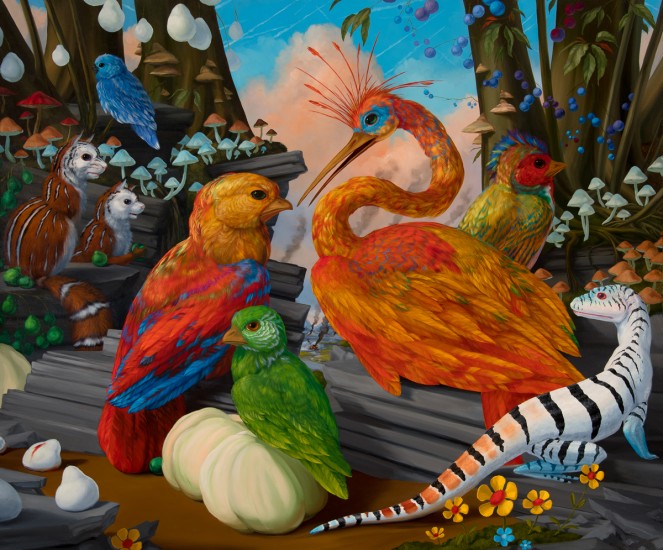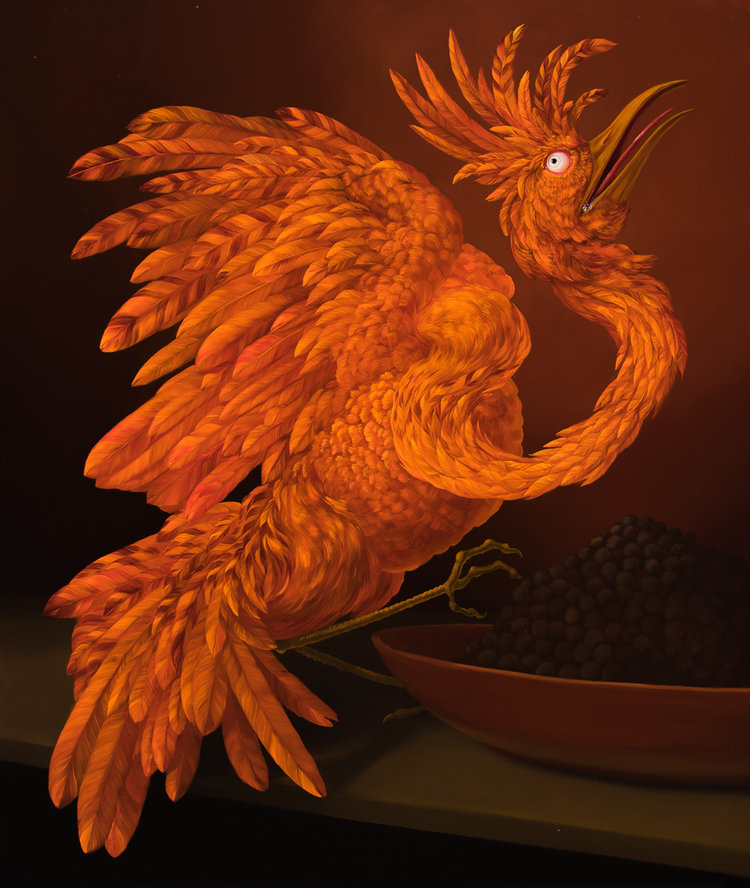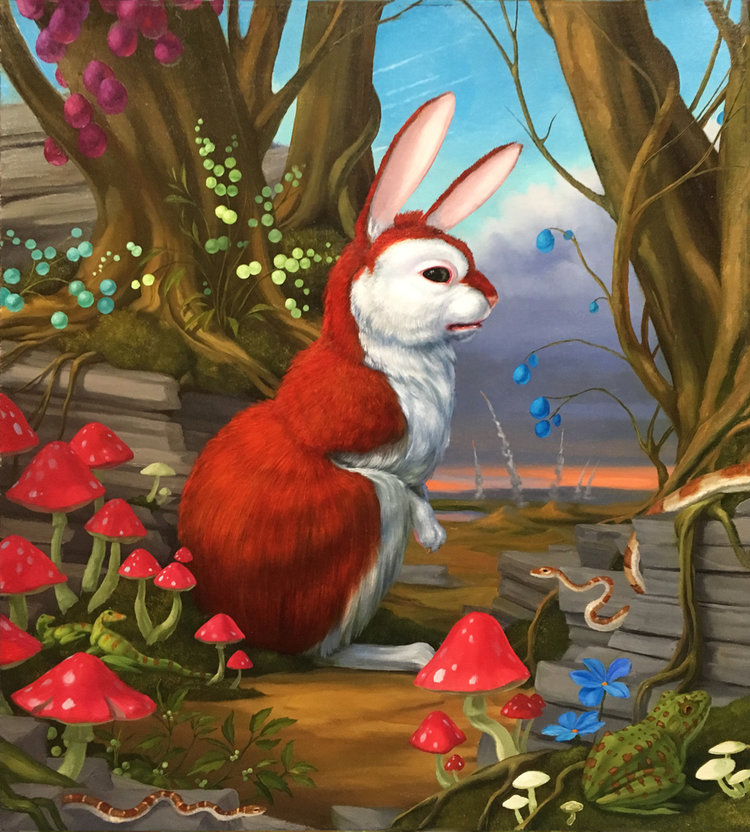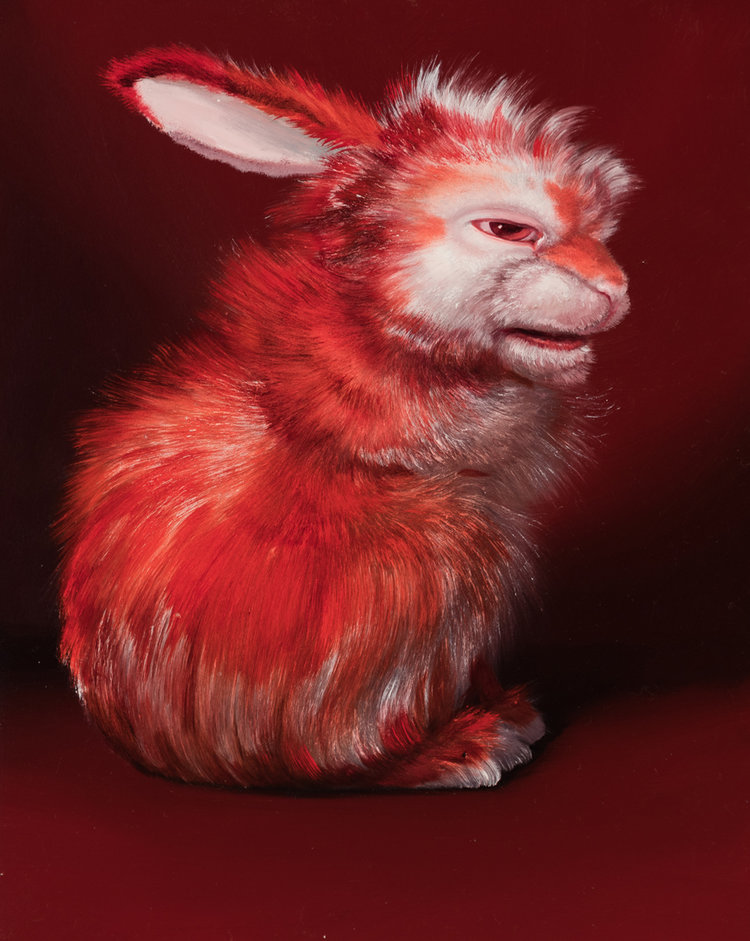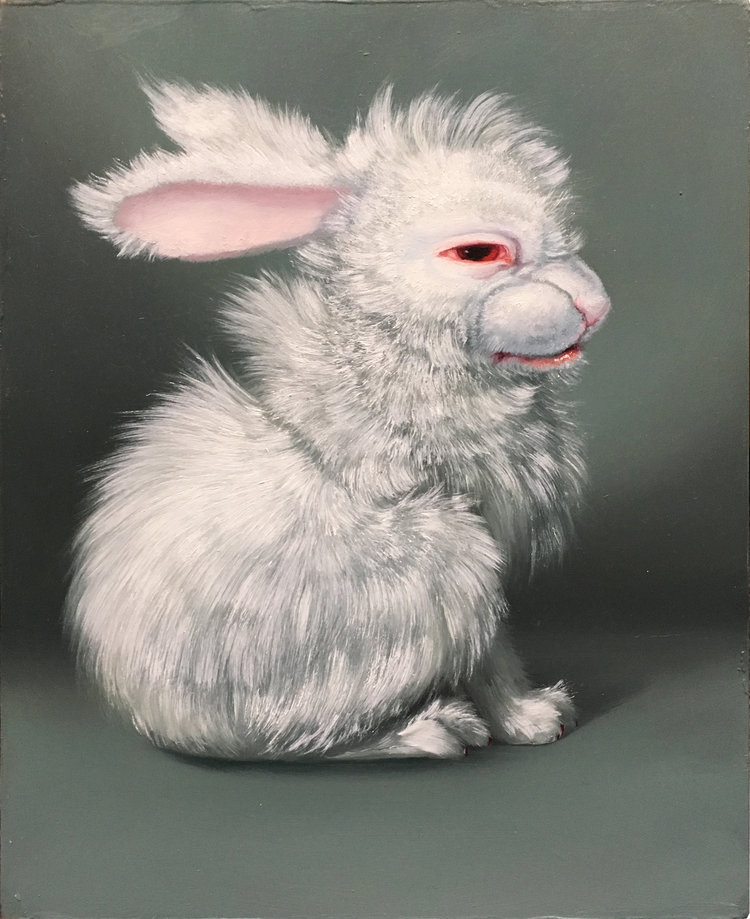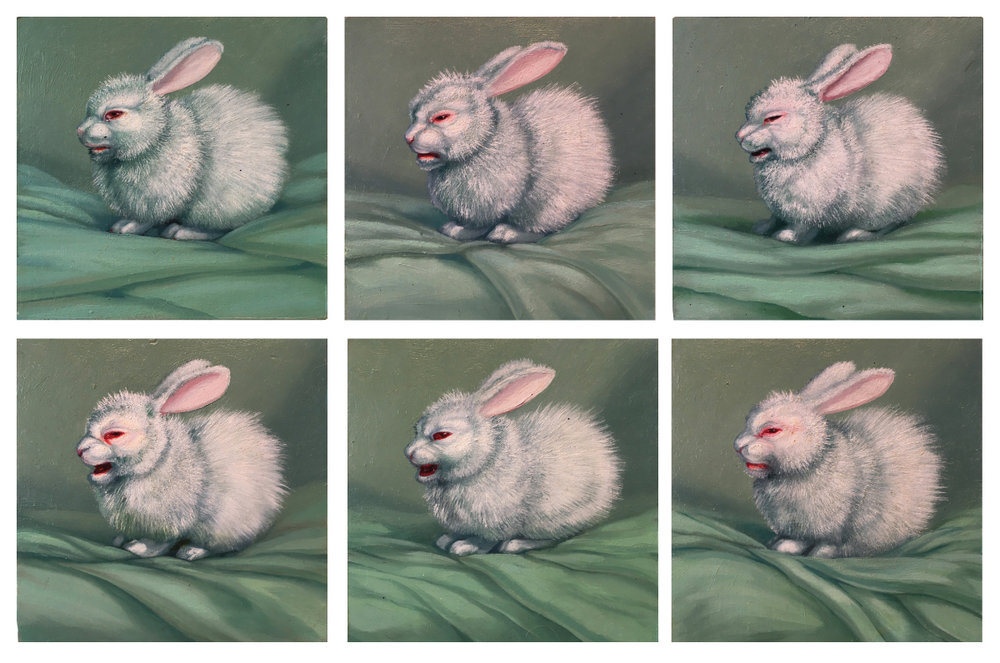*to read this article on the Bizarre website please click HERE
Laurie Hogin
INTERVIEW
Many times in the artistic world we come across extraordinary things, strange things, shocking or simply that they leave you to the void without knowing what emotional path to choose. The first time we saw the works of Laurie Hogin we definitely felt trapped by a mixture of adoration and many questions. A world so colorful and so full of life, but we do not talk about life in its perfectionist image, we talk about real life, the one that catches you, the one that has its good and evil and the one that grabs you, squeezes, the one that you love and hate at the same time and most importantly ... you can not stop living it, because the connection you have is so strong that what happens happens, you keep holding her hand. And if we have to describe what we feel at the moment of seeing the works of Laurie Hogin, perhaps it would be just the moment to squeeze this hand and realize that it is not something else, but life itself.
Bizzarre: Hi Laurie, can you please introduce yourself?
LH: Hello!
I’m an artist, a professor of art at the University of Illinois, and a middle-aged tomboy mother-of-one. I like reading about history, politics, brains, nature, the environment, and the things that poison them. I also read as many newspapers and magazines as time permits, searching for ways out of the political disasters we seem to be courting and planning my responses, given my roles as citizen, artist, and teacher. I also occasionally get to write short stories and essays on art, which are another important form of expression for me.
I live with my offspring, a political science major; his father, a photographer; and two weird, large rescue dogs in the middle of the prairie in the middle of the U.S. where industrial corn and soy wave in the breeze as far as the eye can see.
My background includes access to tremendous educational resources which provided life-saving guidance, encouragement, and assistance from teachers, and rescue from a chaotic, unhappy household where there were tragedies, mental illness, substance problems, and mild violence. The house looked rather nice, but inside, it was toxic. I will always be grateful for those teachers who helped save me. They are the reason I became a teacher.
The conditions of my upbringing were among reasons I was obsessed with poisoning and so much of my artwork has been about the effects of poisoning—that has been the organizing metaphor of one of my most productive artistic narratives.
Before I understood that I was under the spell of a metaphor, I worked as an environmental activist, first as a student and later as an adult, and was proud of what my groups were able to accomplish. I may join that fight again soon.
I make paintings that combine strategies from the histories of painting with tropes of contemporary visual culture including cinema, comics, cartoons, anime, advertising, fashion, porn, and retail and museum display. I’m interested in pictures that tell stories about human attributes and tendencies, including love, pleasure, and desire, as well as trauma, horror, anger, outrage, obsession, addiction, violence, and grief. I’m interested in the history of the landscape, what it does to our relationship to the land, and how it has always obscured the truth of the wilderness and the condition of the planet. My images are often allegories or political cartoons.
Laughter and humor are my favorite social lubricants, but an occasional beer is nice as well.
B: Your works are full of different emotions. What is the emotion you mostly express in there and why?
LH: Rage and outrage, because I’ve seen some stuff and continue to see stuff that is outrageous.
B: Do you believe in a perfect world?
LH: Hell, no.
B: Why do you think art is so important for human beings?
LH: This question could be answered in three related ways. First, I suspect there’s an evolutionary-biological aspect. Perhaps things produced in service of creative imagination allowed early humans to test ideas. Perhaps art activities were an attempt to reproduce the dopamine rewards provided by the aesthetic pleasures of the natural world, but also conferred a group advantage: Aesthetic pleasures derived from artistic activities allowed groups to tolerate creative individuality, which enhanced group creativity and therefore survival or simply engage in critical contemplation which enhanced cognition. Perhaps art making helped generate useful metaphors, which provided a shorthand for describing dangers, or resources. Any of these effects could confer an evolutionary advantage, so we are “hard-wired” to make art. Just guessing.
Second, there is a psychological aspect. No other realm of human endeavor fosters such pure, non-tendentious, non-utilitarian activity. This permits artists to do things that reflect their individual, embodied cognition—how they think, what they think, how they move, what they feel and feel like; emotional states, intentional and rationally-derived responses to stimuli and social relationships; conscious, unconscious, physical, sensory…the artist is the alpha and the omega of the art. The art proclaims the existence of the self.
Third, there is a sociopolitical aspect. No other realm of human endeavor interjects the magnificent diversity of subjective, individual human experience and creativity into material and social life as art does. It is therefore essential to the perpetuation of liberal, democratic ideas. Totalitarians don’t like art; it is evidence of individuality and of free thinking, it encourages freedom of being and freedom of conscience.
B: In your works, the main characters are animals. What do you think is this thing that makes us different than other creatures?
LH: We have a neocortex. That gives us enough of an extra thing that we’ve been able to alter the whole planet—the much-discussed “Anthropocene”—and this extra thing also probably gives us a level of metacognitive awareness beyond that of other species. This makes it truly imperative that we treat each other with respect, empathy, love, and as much generosity as is reasonably possible. Other than that, we are not that different from other creatures. Careful, respectful observation reveals that we share a great deal with them. The more we understand, about brains, about evolution, about being and existence, the more obvious it is that we’re all quite related, which suggests other species are also deserving of reasonable levels of respect, empathy, love, and generosity. This is one of the reasons that my animals are often depicted doing human-like things, engaging in anthropomorphic relationships and narratives, have human attributes, and make eye contact with the viewer.
B: You have long experience in the art world, what would you change in it after so many years?
LH: I’d be far more social, professionally ambitious, and cunning about art-world success (as typically understood) and entitled to it (in a way that seems to come more naturally to some personalities, and, frankly, to men…I would have been smart to be more manly), instead of the rather reclusive Maker of Weird Things I have been…Then again, the higher echelons of the art world are full of trivialities, false values, and troublesome attitudes, and rather than cruising among them, I have spent my time actually making art, so maybe the view from here is just right.
B: What was your biggest struggle as an artist?
LH: Overcoming the lack of confidence and bad social choices made after growing up confused. It is a lot easier to actively petition the world for success when one feels entitled and centered, which I did not, for a very long time.
B: I always ask myself...
LH: ...what should I eat for breakfast? And how should I live the rest of my life?
B: If you had to choose one song to describe your work, which one would it be?
LH: David Bowie’s “Moonage Daydream”.
B: Give and advice to someone that starts doing art.
LH: This is what I tell my students: Pay attention to what you pay attention to. You are the only location in the universe that is the sum total of your biology and experience; no one can make the art you will make. Make your work; let yourself make your work—do not censor yourself. Of course, think critically about it; give it context in language, culture, discourses, but remember the answer to what you should do next IS IN THE STUDIO. Go there, and study what you study—and remember that “the studio” is also a state of mind. Go there, and make your art. That’s job #1. Worry about audiences and business and success later. If your work is the real deal, it will find its audience; its audience will find it. The Internet has made this possible in new and evolving ways. Use it, be savvy and strategic, but always go back to who you are and what you do.
Interview by Desislava Staneva

